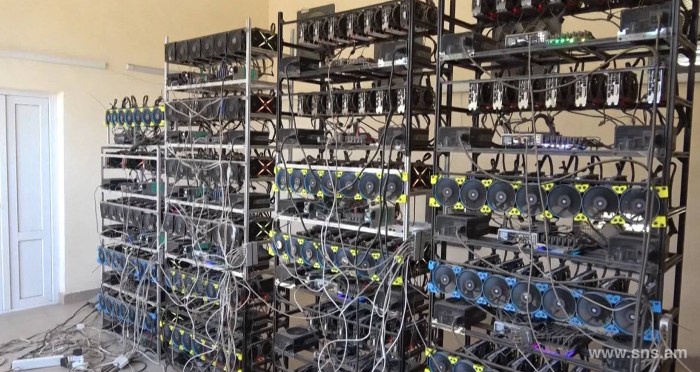When it comes to crypto mining techniques, get ready to dive into a world where cutting-edge technology meets lucrative opportunities. From deciphering the basics to exploring advanced strategies, this guide has got you covered.
Whether you’re a newbie or a seasoned pro, understanding the ins and outs of crypto mining techniques is crucial for maximizing your profits in the ever-evolving digital landscape.
Introduction to Crypto Mining Techniques

Crypto mining is the process of validating and adding new transactions to a blockchain network by solving complex mathematical puzzles. Miners use powerful computers to compete in solving these puzzles, with the first one to solve it being rewarded with newly minted cryptocurrencies.
Crypto mining plays a crucial role in the blockchain network by ensuring the security and integrity of transactions. Miners help to validate transactions and prevent double-spending, making it difficult for any single entity to control the network.
The Role of Miners
Miners are responsible for securing the network by verifying transactions and adding them to the blockchain. They use their computational power to solve cryptographic puzzles, which in turn helps to maintain the decentralized nature of the blockchain network.
Types of Crypto Mining Techniques
Cryptocurrency mining involves various techniques that differ in their approach and efficiency. Let’s explore some of the most common types of crypto mining techniques and compare their key features.
Proof of Work (PoW)
- Proof of Work is the original mining algorithm used by Bitcoin and many other cryptocurrencies.
- Miners compete to solve complex mathematical puzzles to validate transactions and create new blocks on the blockchain.
- While PoW is secure and decentralized, it is energy-intensive and requires powerful hardware.
Proof of Stake (PoS)
- Proof of Stake involves validators who are chosen to create new blocks based on the number of coins they hold.
- It is more energy-efficient than PoW since it doesn’t require mining hardware and consumes less electricity.
- However, PoS can lead to centralization if wealthier participants have more influence over the network.
Cloud Mining
- Cloud mining allows users to rent mining equipment remotely to mine cryptocurrencies without the need for hardware maintenance.
- It offers a convenient way to participate in mining without the high upfront costs of purchasing equipment.
- However, cloud mining services are often associated with high fees and potential scams.
Hardware Requirements for Crypto Mining

To effectively mine cryptocurrencies, specific hardware components are essential for optimizing mining efficiency. These components include GPUs, ASIC miners, CPUs, and other equipment designed for mining operations.
Graphics Processing Units (GPUs)
- GPUs are commonly used for mining due to their parallel processing power.
- Popular GPU brands for mining include NVIDIA and AMD.
- High-end GPUs with greater processing power are preferred for faster mining speeds.
Application-Specific Integrated Circuit (ASIC) Miners, Crypto mining techniques
- ASIC miners are specialized hardware designed specifically for mining cryptocurrencies.
- ASIC miners offer significantly higher mining performance compared to GPUs.
- They are more energy-efficient and cost-effective for mining operations at scale.
Central Processing Units (CPUs)
- CPUs are less commonly used for mining due to their lower processing power compared to GPUs and ASIC miners.
- However, CPUs can still be utilized for certain cryptocurrencies that are CPU-minable.
- CPUs are generally more versatile for other computing tasks beyond mining.
Other Equipment
- Additional hardware such as power supplies, cooling systems, and motherboards are crucial for creating a stable mining rig.
- Proper ventilation and cooling are essential to prevent overheating and ensure optimal mining performance.
- Quality hardware components contribute to the overall efficiency and longevity of the mining equipment.
Hardware advancements, such as improved processing power and energy efficiency, have a direct impact on the mining efficiency and profitability of cryptocurrency miners.
Software for Crypto Mining
Cryptocurrency mining software plays a crucial role in the mining process, acting as the intermediary between the mining hardware and the blockchain network. Choosing the right software is essential for achieving optimal mining results and maximizing profitability.
Popular Mining Software Options
- 1. CGMiner: A widely used open-source software that supports various hardware types and allows for advanced tweaking and monitoring.
- 2. NiceHash: Known for its user-friendly interface and profitability optimization features, NiceHash is popular among miners of all levels.
- 3. MinerGate: This software is suitable for beginners and offers a simple setup process for mining multiple cryptocurrencies.
Interactions Between Software and Hardware
Mining software communicates with the mining hardware to instruct it on which computations to perform and how to submit the results to the blockchain network. It also monitors the hardware’s performance and temperature to ensure efficient operation.
Importance of Choosing the Right Software
Choosing the appropriate mining software can significantly impact your mining efficiency and profitability. The right software will optimize your hardware’s performance, provide stability during the mining process, and offer features for managing your mining operation effectively.
